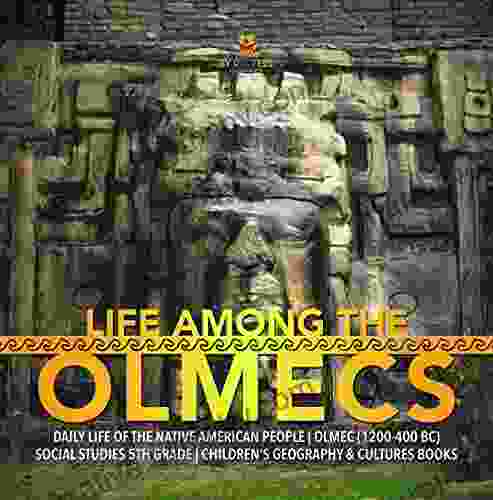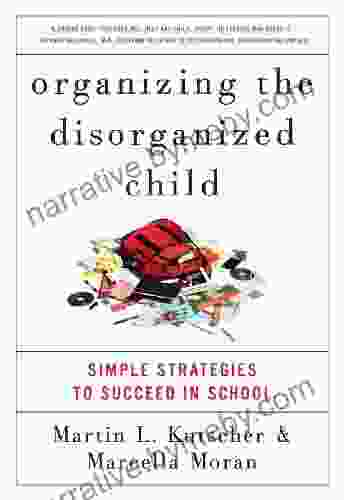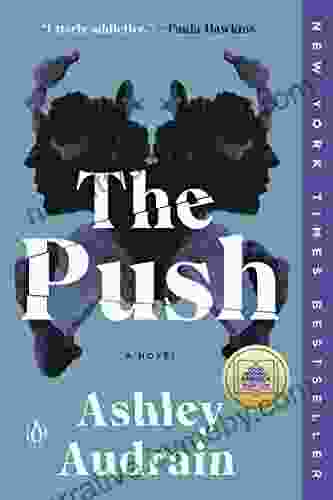The Ultimate Guide to Helping Disorganized Children: A Comprehensive Review of "Organizing the Disorganized Child"

: Understanding Disorganization in Children
Disorganization is a common challenge faced by many children, affecting their academic performance, self-esteem, and overall well-being. The book "Organizing the Disorganized Child" by Dr. Susan Pinsky provides a comprehensive guide to helping parents and educators understand and address the causes and consequences of disorganization in children.
Chapter 1: Understanding the Causes of Disorganization
Dr. Pinsky explores various factors that can contribute to disorganization in children, including:
4.2 out of 5
| Language | : | English |
| File size | : | 1125 KB |
| Text-to-Speech | : | Enabled |
| Screen Reader | : | Supported |
| Enhanced typesetting | : | Enabled |
| X-Ray | : | Enabled |
| Word Wise | : | Enabled |
| Print length | : | 178 pages |
- Executive Function Deficits: Difficulty with planning, time management, and attention
- Cognitive Impairments: Limited working memory, poor problem-solving abilities
- Sensory Processing Issues: Hypersensitivity or hyposensitivity to certain stimuli
- Emotional Dysregulation: Difficulty managing emotions, which can lead to impulsivity and disorganized behavior
- Environmental Factors: Cluttered or chaotic environments, lack of storage space
Chapter 2: The Impact of Disorganization on Children
Disorganization can have far-reaching consequences for children, including:
- Academic Difficulties: Trouble completing assignments, losing homework, missing deadlines
- Social Challenges: Difficulty making and keeping friends, conflicts with siblings or peers
- Increased Stress and Anxiety: Feeling overwhelmed by clutter and disorganization
- Low Self-Esteem: Negative self-perceptions due to perceived incompetence or disarray
Chapter 3: Developing an Organizational Plan
Dr. Pinsky outlines a step-by-step approach to developing an organizational plan that meets the unique needs of the child. This includes:
- Assessing the Child's Needs: Identifying specific areas of disorganization and underlying causes
- Setting Realistic Goals: Establishing achievable goals that the child can work towards
- Creating a Visual Schedule: Using charts, calendars, or whiteboards to provide a clear structure for the day
- Establishing Routines: Setting regular times for tasks such as homework, chores, and mealtimes
- Involving the Child in Decision-Making: Giving the child a sense of ownership and responsibility
Chapter 4: Implementing Organizational Strategies
The book provides practical strategies for implementing organizational systems in various areas of the child's life, such as:
- Decluttering and Organizing the Home: Using storage solutions, sorting items, and creating designated spaces
- Organizing Schoolwork: Using binders, folders, and planners to keep track of assignments and materials
- Managing Time and Schedules: Breaking down tasks, using timers, and setting reminders
- Developing Self-Regulation Skills: Teaching children to self-monitor, manage their emotions, and make responsible choices
Chapter 5: Supporting the Disorganized Child
Dr. Pinsky emphasizes the importance of providing a supportive environment for the disorganized child. This includes:
- Positive Reinforcement: Rewarding the child's efforts and recognizing their progress
- Avoidance of Punishment: Focusing on solutions rather than punishment, which can foster negative behaviors
- Collaboration with Schools and Therapists: Seeking professional support if the disorganization is severe or persists despite interventions
- Patience and Persistence: Understanding that change takes time and supporting the child through setbacks
: Empowering Children to Succeed
"Organizing the Disorganized Child" is an invaluable resource for parents, educators, and therapists seeking to help children overcome the challenges of disorganization. By understanding the causes and consequences of disorganization and implementing effective strategies, adults can empower children to develop the organizational skills they need to succeed academically, socially, and emotionally.
4.2 out of 5
| Language | : | English |
| File size | : | 1125 KB |
| Text-to-Speech | : | Enabled |
| Screen Reader | : | Supported |
| Enhanced typesetting | : | Enabled |
| X-Ray | : | Enabled |
| Word Wise | : | Enabled |
| Print length | : | 178 pages |
Do you want to contribute by writing guest posts on this blog?
Please contact us and send us a resume of previous articles that you have written.
 Book
Book Novel
Novel Page
Page Chapter
Chapter Text
Text Story
Story Genre
Genre Reader
Reader Library
Library Paperback
Paperback E-book
E-book Magazine
Magazine Newspaper
Newspaper Paragraph
Paragraph Sentence
Sentence Bookmark
Bookmark Shelf
Shelf Glossary
Glossary Bibliography
Bibliography Foreword
Foreword Preface
Preface Synopsis
Synopsis Annotation
Annotation Footnote
Footnote Manuscript
Manuscript Scroll
Scroll Codex
Codex Tome
Tome Bestseller
Bestseller Classics
Classics Library card
Library card Narrative
Narrative Biography
Biography Autobiography
Autobiography Memoir
Memoir Reference
Reference Encyclopedia
Encyclopedia Tiger Toledo
Tiger Toledo Gary Letcher
Gary Letcher Atanas Matov
Atanas Matov Barbara Brenner
Barbara Brenner Craig Pittman
Craig Pittman Automated Retirees
Automated Retirees Ayn Rand
Ayn Rand Joquitta Palmer
Joquitta Palmer Baubre Murray
Baubre Murray Avanti Centrae
Avanti Centrae Barbara Gastel
Barbara Gastel Ernst Young Llp
Ernst Young Llp Becca Syme
Becca Syme Joel A Dombrowski
Joel A Dombrowski Arthur Steel
Arthur Steel Austin Kleon
Austin Kleon Ashley L Wilson
Ashley L Wilson Bb
Bb Barton Zwiebach
Barton Zwiebach Paul Hallas
Paul Hallas
Light bulbAdvertise smarter! Our strategic ad space ensures maximum exposure. Reserve your spot today!

 Hassan CoxThe Ground On Which We Stand: A Literary Masterpiece That Unlocks the Depths...
Hassan CoxThe Ground On Which We Stand: A Literary Masterpiece That Unlocks the Depths...
 Alfred RossUnveiling the Enigmatic Olmecs: A Journey into the Daily Lives of the Native...
Alfred RossUnveiling the Enigmatic Olmecs: A Journey into the Daily Lives of the Native... Carson BlairFollow ·2.4k
Carson BlairFollow ·2.4k Salman RushdieFollow ·6.1k
Salman RushdieFollow ·6.1k Nathan ReedFollow ·3.6k
Nathan ReedFollow ·3.6k Tim ReedFollow ·9.8k
Tim ReedFollow ·9.8k John ParkerFollow ·7.1k
John ParkerFollow ·7.1k Matthew WardFollow ·9.8k
Matthew WardFollow ·9.8k Brandon CoxFollow ·9.2k
Brandon CoxFollow ·9.2k Gordon CoxFollow ·13.9k
Gordon CoxFollow ·13.9k

 Ian McEwan
Ian McEwanWhy Didn't Anyone Say Anything? Uncovering the Hidden...
By [Author's...

 William Wordsworth
William WordsworthArthurian Legendarians: Faithless One - Part One – A...
In the realm of legendary tales, the...

 Corey Hayes
Corey HayesSSAT ISEE Prep Test: Arithmetic Review Flash Cards Cram...
Are you preparing for the SSAT or ISEE exam?...

 Robert Louis Stevenson
Robert Louis StevensonUnveiling the Essential Guide to Compliance: BCBS 239...
In the ever-evolving...

 Javier Bell
Javier BellJust Peachy: A Tale of Sweetness and Sassiness
Immerse yourself in a...

 Brent Foster
Brent FosterStep-by-Step Instruction Manual to Building a Real Estate...
Are you eager to embark on the...
4.2 out of 5
| Language | : | English |
| File size | : | 1125 KB |
| Text-to-Speech | : | Enabled |
| Screen Reader | : | Supported |
| Enhanced typesetting | : | Enabled |
| X-Ray | : | Enabled |
| Word Wise | : | Enabled |
| Print length | : | 178 pages |







